XamarinAPI33Bundle.GetParcelable迁移指南
时间:2025-07-14 22:12:24 146浏览 收藏
目前golang学习网上已经有很多关于文章的文章了,自己在初次阅读这些文章中,也见识到了很多学习思路;那么本文《Xamarin API 33 Bundle.GetParcelable 迁移方法》,也希望能帮助到大家,如果阅读完后真的对你学习文章有帮助,欢迎动动手指,评论留言并分享~
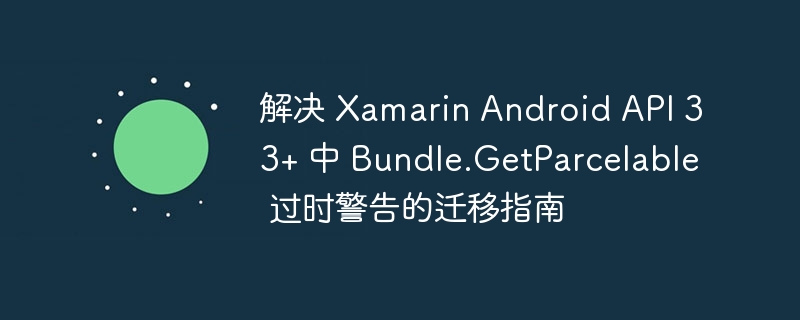
随着 Android 平台的不断演进,API 接口也会进行更新和优化。自 Android 13 (API 33,代号 Tiramisu) 起,Android.OS.Bundle 类中用于获取 Parcelable 对象的 GetParcelable(string) 方法被标记为过时(deprecated)。这一变化旨在推动开发者采用更具类型安全性的 API,以减少运行时类型转换错误并提升代码的健壮性。对于使用 Xamarin 进行 Android 应用开发的开发者而言,理解并适应这一变更至关重要,以确保应用程序在最新 Android 版本上的兼容性和稳定性。
理解 Bundle 与 Parcelable 数据传输
在 Android 应用开发中,Bundle 是一种常用的数据容器,用于在不同组件(如 Activity、Service、BroadcastReceiver)之间传递数据。当需要传递复杂对象时,通常会要求这些对象实现 Android.OS.IParcelable 接口,以便它们能够被序列化和反序列化。
传统的 Parcelable 数据传输流程通常如下:
数据打包(发送方): 将实现了 IParcelable 接口的自定义对象放入 Bundle 中。
// 假设 MyUser 是一个实现了 IParcelable 接口的自定义类 User MyUser = new User("user_id", "username", /* ... 其他属性 ... */); Intent intent = new Intent(this, typeof(Menu)); Bundle bundlee = new Bundle(); bundlee.PutParcelable("MyUser", MyUser); // 将 MyUser 对象存入 Bundle intent.PutExtra("TheBundle", bundlee); // 将 Bundle 存入 Intent StartActivity(intent); // 启动目标 Activity数据解包(接收方,旧方法): 在目标 Activity 中,从 Intent 中获取 Bundle,然后使用 GetParcelable(string) 方法提取对象。
// 在目标 Activity 的 OnCreate 或其他适当方法中 Bundle bundlee = Intent.Extras.GetBundle("TheBundle"); // 此时,以下代码会触发过时警告: User receivedUser = bundlee.GetParcelable("MyUser") as User;上述 bundlee.GetParcelable("MyUser") as User; 行将导致编译时的过时警告,提示该方法已被弃用。
API 变更与过时警告的根源
Android 平台引入 GetParcelable(string key, Class
新的方法签名明确要求传入期望返回对象的 Java.Lang.Class 实例,从而在编译阶段就能验证类型,提升代码的健壮性和可维护性。
迁移方案:使用类型安全的 GetParcelable
要解决 Bundle.GetParcelable(string) 的过时警告并适应新的 API,关键在于理解并正确使用 GetParcelable(string key, Class
在 Xamarin (C#) 环境中,Class
以下是迁移后的代码示例:
// 假设 MyUser 是一个实现了 Android.OS.IParcelable 接口的自定义类
// 并且在 Xamarin.Android 项目中,该类通常会有一个伴随的 ParcelableCreator 实现
// --- 发送数据 (此部分代码通常无需改变) ---
// User MyUser = new User("user_id", "username", /* ... 其他属性 ... */);
// Intent intent = new Intent(this, typeof(Menu));
// Bundle bundlee = new Bundle();
// bundlee.PutParcelable("MyUser", MyUser); // PutParcelable 方法仍然可用且未过时
// intent.PutExtra("TheBundle", bundlee);
// StartActivity(intent);
// --- 接收数据 (在目标 Activity 中,使用新的类型安全方法) ---
// 首先,获取包含数据的 Bundle
Bundle bundlee = Intent.Extras.GetBundle("TheBundle");
if (bundlee != null)
{
// 使用新的 GetParcelable(string key, Class<T> clazz) 方法
// 通过 Java.Lang.Class.FromType(typeof(User)) 提供 User 类的类型信息
User receivedUser = bundlee.GetParcelable("MyUser", Java.Lang.Class.FromType(typeof(User))) as User;
if (receivedUser != null)
{
// 成功获取并转换了 User 对象
// 现在可以使用 receivedUser 对象了
Console.WriteLine($"Received User ID: {receivedUser.UserID}");
}
else
{
Console.WriteLine("Failed to retrieve User object or it was null.");
}
// 另一种获取类型信息的方式,如果 MyUser 实例已经存在并需要更新其内容:
// User existingUser = new User(); // 假设 existingUser 已经被初始化
// existingUser = bundlee.GetParcelable("MyUser", Java.Lang.Class.FromType(existingUser.GetType())) as User;
// 注意:通常推荐使用第一种方式,直接通过 typeof(T) 获取并赋值,更为直接。
}
else
{
Console.WriteLine("Bundle is null. No data received.");
}通过上述修改,GetParcelable 方法的调用将不再触发过时警告,并且代码在编译时就能获得更强的类型保证。
注意事项
自定义类与 IParcelable 实现: 确保你的自定义类(如示例中的 User)仍然正确实现了 Android.OS.IParcelable 接口,并且包含一个静态的 IParcelableCreator 实现。这是 Bundle 能够序列化和反序列化自定义对象的先决条件。
类加载器 (ClassLoader): 根据 Android 官方文档的说明,如果 Parcelable 对象不是 Android 平台提供的内置类(即你自定义的类),你可能需要在获取 Bundle 后,但在调用 GetParcelable 之前,通过 Bundle.SetClassLoader(ClassLoader) 方法设置正确的类加载器。在大多数 Xamarin.Android 的常见场景中,Java.Lang.Class.FromType() 会隐式地处理好类加载,但如果遇到 ClassCastException 或对象无法正确反序列化的情况,这可能是一个需要检查的点。通常,this.Class.ClassLoader 或 Application.Context.ClassLoader 可以作为合适的类加载器。
空值处理: GetParcelable 方法在找不到对应键的值、值为空或类型不匹配时,会返回 null。因此,在获取对象后,务必进行空值检查,以避免 NullReferenceException。
API 兼容性: 此变更主要影响 Android API 33 及更高版本。如果你的应用程序需要兼容更旧的 Android 版本,并且你希望避免条件编译,那么这种迁移是向前兼容的,因为旧版系统会忽略这个新的 GetParcelable 重载。然而,如果你针对的是非常旧的 API 级别,且不希望升级到 API 33,则可以暂时忽略此警告,但从长远来看,更新是不可避免的。
总结
随着 Android 平台的不断发展,API 的更新是常态。Bundle.GetParcelable 方法的更新是朝着更安全、更健壮的编程模型迈进的一步。通过将过时的 GetParcelable(string) 迁移到类型安全的 GetParcelable(string key, Class
以上就是《XamarinAPI33Bundle.GetParcelable迁移指南》的详细内容,更多关于的资料请关注golang学习网公众号!
-
501 收藏
-
501 收藏
-
501 收藏
-
501 收藏
-
501 收藏
-
107 收藏
-
362 收藏
-
281 收藏
-
229 收藏
-
166 收藏
-
287 收藏
-
136 收藏
-
308 收藏
-
249 收藏
-
495 收藏
-
175 收藏
-
466 收藏
-
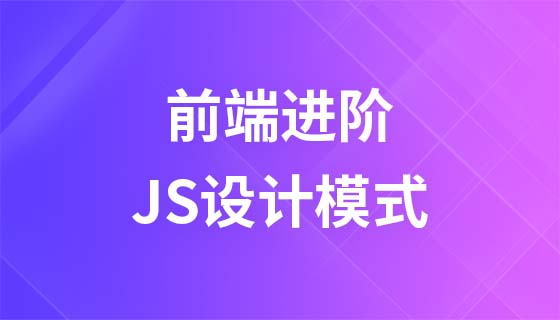
- 前端进阶之JavaScript设计模式
- 设计模式是开发人员在软件开发过程中面临一般问题时的解决方案,代表了最佳的实践。本课程的主打内容包括JS常见设计模式以及具体应用场景,打造一站式知识长龙服务,适合有JS基础的同学学习。
- 立即学习 543次学习
-
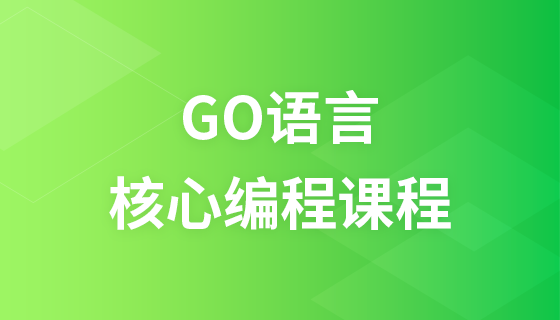
- GO语言核心编程课程
- 本课程采用真实案例,全面具体可落地,从理论到实践,一步一步将GO核心编程技术、编程思想、底层实现融会贯通,使学习者贴近时代脉搏,做IT互联网时代的弄潮儿。
- 立即学习 516次学习
-
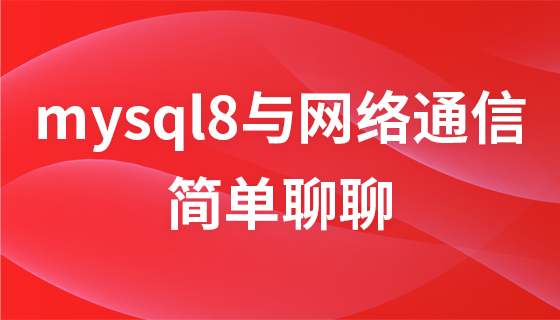
- 简单聊聊mysql8与网络通信
- 如有问题加微信:Le-studyg;在课程中,我们将首先介绍MySQL8的新特性,包括性能优化、安全增强、新数据类型等,帮助学生快速熟悉MySQL8的最新功能。接着,我们将深入解析MySQL的网络通信机制,包括协议、连接管理、数据传输等,让
- 立即学习 500次学习
-
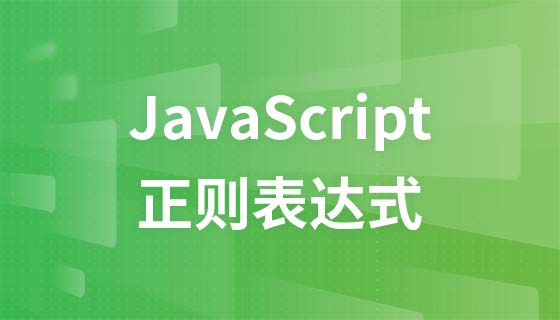
- JavaScript正则表达式基础与实战
- 在任何一门编程语言中,正则表达式,都是一项重要的知识,它提供了高效的字符串匹配与捕获机制,可以极大的简化程序设计。
- 立即学习 487次学习
-
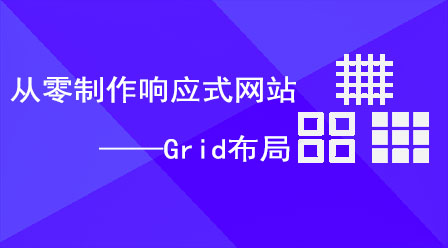
- 从零制作响应式网站—Grid布局
- 本系列教程将展示从零制作一个假想的网络科技公司官网,分为导航,轮播,关于我们,成功案例,服务流程,团队介绍,数据部分,公司动态,底部信息等内容区块。网站整体采用CSSGrid布局,支持响应式,有流畅过渡和展现动画。
- 立即学习 485次学习
